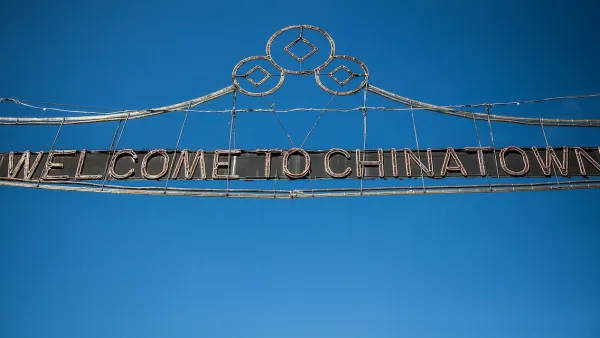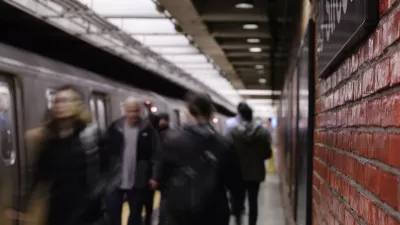A look at Parkchester, one of four planned communities built by the Metropolitan Life Insurance Company in New York City, circa 1940s. The complex includes over 12,000 rental and ownership apartments, located near the #6 subway.

"Middle-class New Yorkers have looked to Parkchester (a 129-acre planned community in the eastern Bronx), for reasonably priced housing ever since the Metropolitan Life Insurance Company (MetLife) completed the complex in the early 1940s," writes Vera Haller, a journalism professor at Baruch College (CUNY), in the "Living In: The inside scoop on New York City neighborhoods and beyond" section of The Times.
The Parkchester complex offers studios, one-, two- and three-bedroom apartments split between sales and rentals. While all 12,271 units in the complex are condominiums, many owners rent them out. A block of 6,382 condos is held by an investor partnership that rents out units through the Parkchester Preservation Management company.
What You’ll Pay
[Ryan Moorehead, the chief executive of Parkchester Preservation Management] said studios generally rent for $975 a month, one-bedrooms for $1,240, two-bedrooms for $1,595 and three-bedrooms for $1,890....
[Felipa Manaiza, a saleswoman for Parkchester Bronx Realty, who is also a resident] said one-bedroom condos begin in the low $100,000s and go up to $130,000; two-bedroom condos range from $140,000 to $180,000; and three-bedroom units from $165,000 to $210,000.
The complex, comprised of 171 brick buildings, most of which are eight or 13 stories in height, has a density of roughly 95 units per acre. The population totals about 41,000 residents.
The leafy neighborhood looks remarkably like Stuyvesant Town and Peter Cooper Village, located on the east side of Manhattan between 14th and 23rd Street, for good reason. Both were developed by MetLife in the same decade, along with the Riverton Houses in Harlem.
Past racial segregation and current demography
"Until 1968, only whites received leases, according to a history of the neighborhood on the website of Parkchester Preservation Management," adds Haller. Wikipedia indicates that MetLife applied the same racially exclusionary policy applied to their other properties: Stuyvesant Town–Peter Cooper Village, Parkfairfax in Virginia, Parkmerced in San Francisco, and Park La Brea in Los Angeles. Riverton Houses served a "largely served an African American population."
Today, whites are now a minority.
"According to the 2009-13 American Community Survey of the Census, 45.6 percent of Parkchester’s residents identify themselves as black or African-American, 33.7 percent as Hispanic, 15.3 percent as Asian and 3.6 as percent white," notes Haller.
Mixed-use
The heart of Parkchester lies in the Aileen B. Ryan Oval, formerly called the Metropolitan Oval, where residents relax on benches as they gaze at the water-spouting nymphs in the plaza’s central fountain.
Stores and restaurants line the complex’s two main streets, Metropolitan Avenue and Unionport Road.
The "Parkchester neighborhood" also includes streets adjacent to the complex "with a mix of attached two-story brick row houses and four-story apartment houses...as well," adds Verra. [See attached map in article indicating streets that extend the border of the neighborhood.]
Transit
The neighborhood is served by two stops on the No. 6 subway train: Castle Hill Ave. and Parkchester, and the Bronx M6 express bus.
In addition, "the Metro-North Railroad is planning a Parkchester stop," notes Haller. "The Metropolitan Transportation Authority expects to complete environmental and federal reviews by 2017."
Art
"At first glance, Parkchester’s brick buildings look plain, but closer inspection shows the builders adorned them with some 500 terra-cotta statues, high on corners and over doorways — animals, human figures and mythical characters," adds Haller.
Note the 13-photo slideshow by Danny R. Peralta of The Times.
FULL STORY: Parkchester, the Bronx, Working as Planned

Planetizen Federal Action Tracker
A weekly monitor of how Trump’s orders and actions are impacting planners and planning in America.

Maui's Vacation Rental Debate Turns Ugly
Verbal attacks, misinformation campaigns and fistfights plague a high-stakes debate to convert thousands of vacation rentals into long-term housing.

San Francisco Suspends Traffic Calming Amidst Record Deaths
Citing “a challenging fiscal landscape,” the city will cease the program on the heels of 42 traffic deaths, including 24 pedestrians.

Amtrak Rolls Out New Orleans to Alabama “Mardi Gras” Train
The new service will operate morning and evening departures between Mobile and New Orleans.

The Subversive Car-Free Guide to Trump's Great American Road Trip
Car-free ways to access Chicagoland’s best tourist attractions.

San Antonio and Austin are Fusing Into one Massive Megaregion
The region spanning the two central Texas cities is growing fast, posing challenges for local infrastructure and water supplies.
Urban Design for Planners 1: Software Tools
This six-course series explores essential urban design concepts using open source software and equips planners with the tools they need to participate fully in the urban design process.
Planning for Universal Design
Learn the tools for implementing Universal Design in planning regulations.
Heyer Gruel & Associates PA
JM Goldson LLC
Custer County Colorado
City of Camden Redevelopment Agency
City of Astoria
Transportation Research & Education Center (TREC) at Portland State University
Jefferson Parish Government
Camden Redevelopment Agency
City of Claremont




























